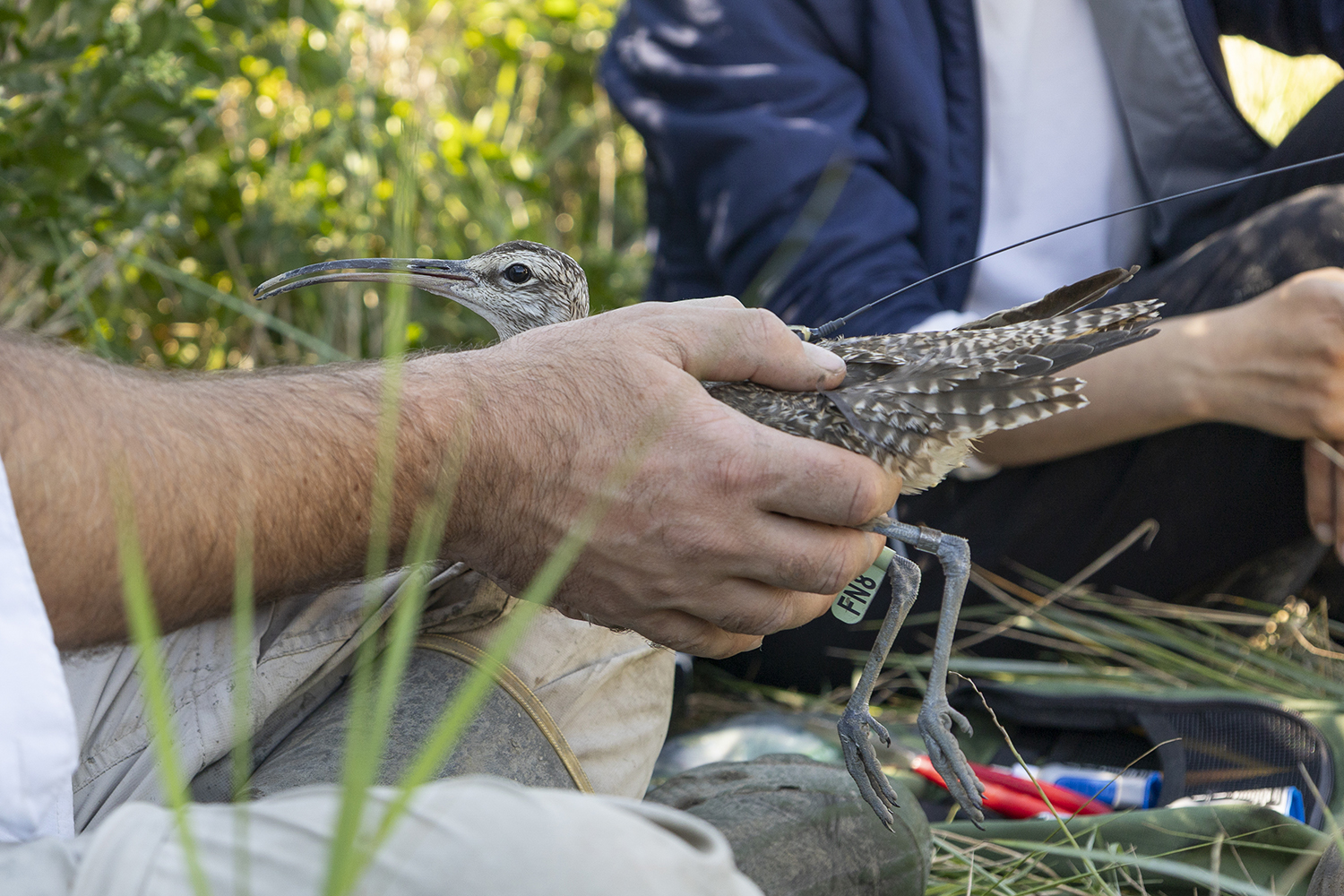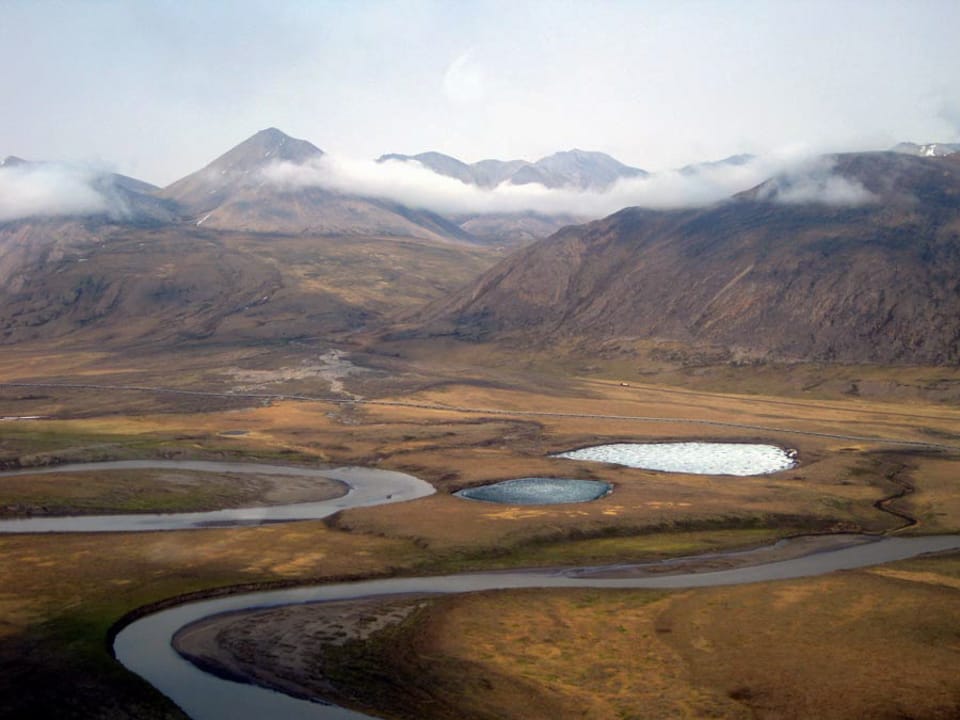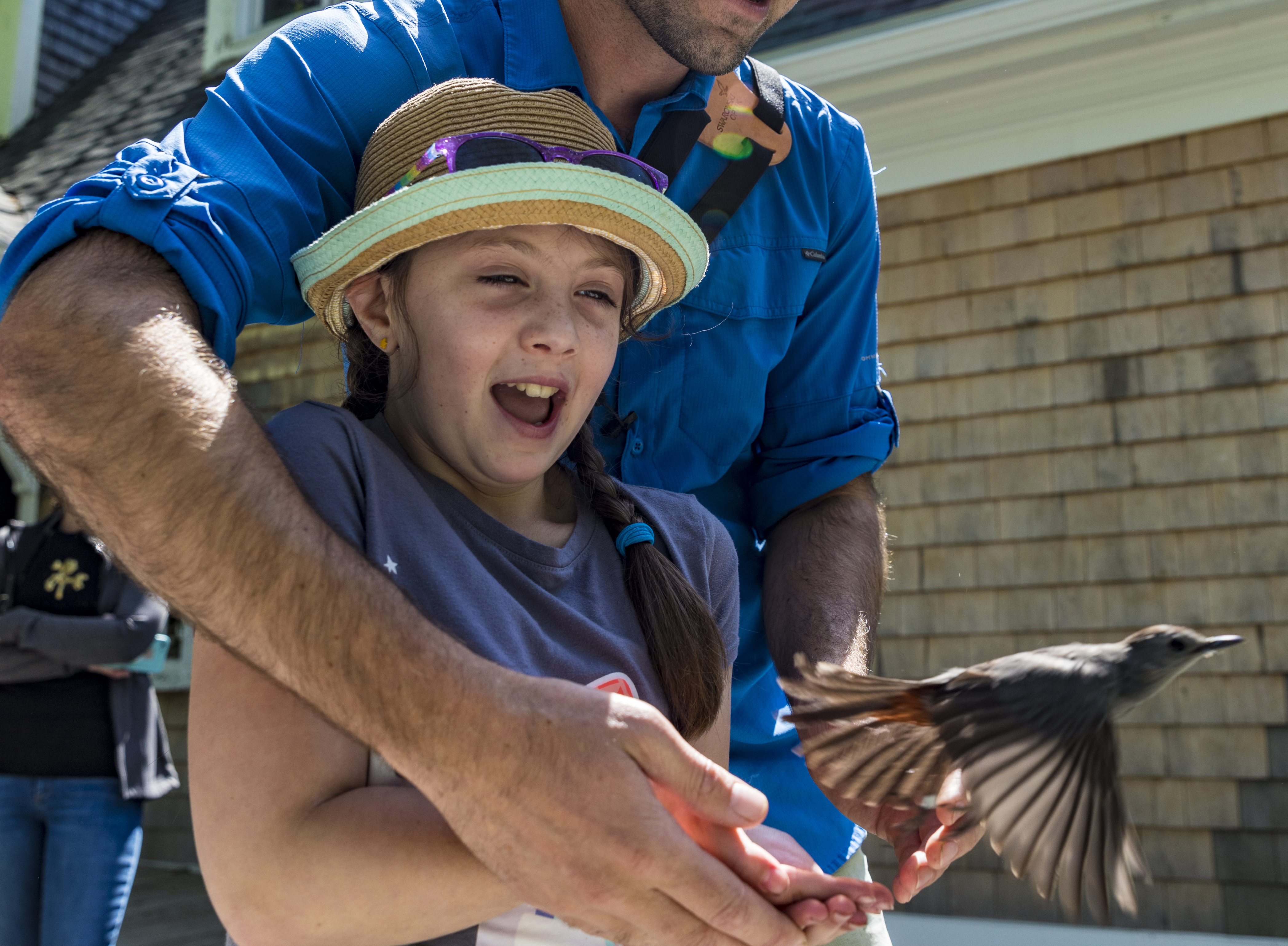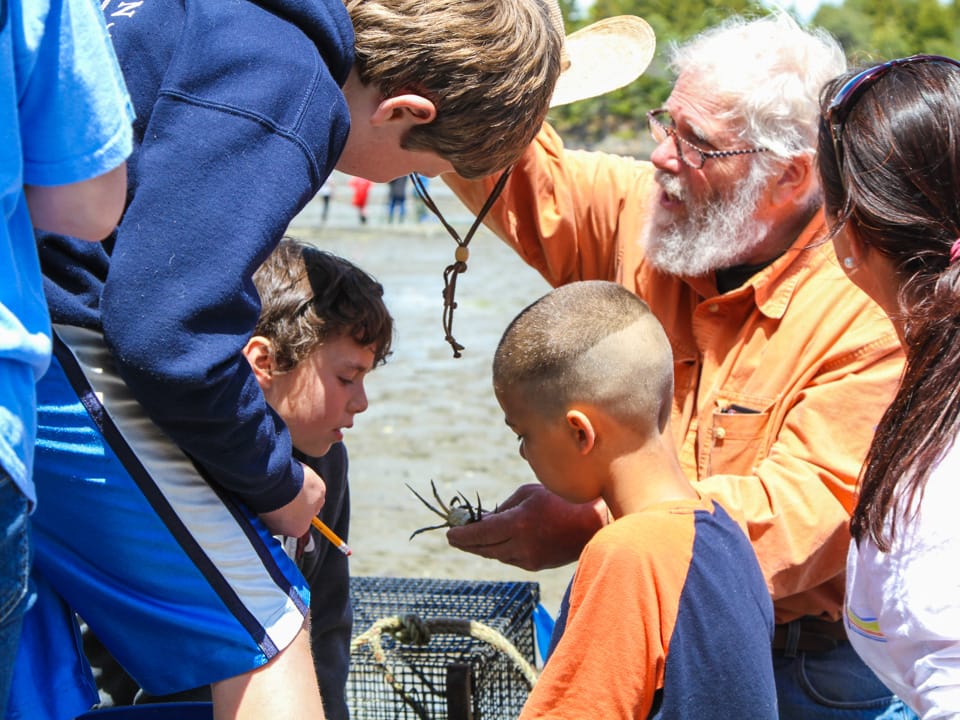
Andrea Ferreira
Science Communications Manager
A new study led by Manomet scientists is shedding light on one of the most remarkable journeys in the bird world: the migration of the Hudsonian Whimbrel (Numenius phaeopus hudsonicus), hereafter referred to as Whimbrel. The paper draws on satellite transmitter data from juvenile Whimbrels tagged on Cape Cod to trace their first southbound flights. By fitting these young shorebirds with small devices that transmit their locations via satellite, researchers established migratory connections between Cape Cod and key stopover and wintering sites across the Americas.
Where do these juveniles go—and why is it important to find out? The Whimbrel population along the West Atlantic Flyway has been shrinking by about 4% each year, earning it a place on the U.S. list of birds most in need of conservation. While it’s known that Whimbrels face numerous threats along their migration routes, much remains to be discovered about where and why these declines are happening. This new study, authored by Manomet scientists Alan Kneidel, Liana DiNunzio, Shiloh Schulte, and Brad Winn, begins to fill that gap.
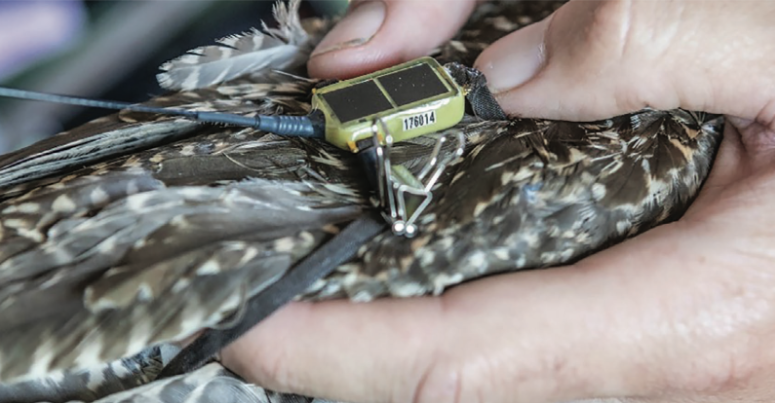
The Journey
Over seven years, the team followed eight young Whimbrels as they embarked on their first great migration. Each bird carried a tiny satellite transmitter, allowing scientists to trace its movements from the saltmarshes of Cape Cod to destinations thousands of miles away. The data revealed that juveniles paused at different intervals along the way, some for just a few days at quick stopovers, others for weeks at staging sites where they rested and refueled before continuing south. Eventually, each bird reached its non-breeding grounds, where it would remain until the long journey north began again.
Of the eight Whimbrels fitted with satellite tags, three offered a glimpse of their local movements around Cape Cod before ceasing to transmit. While we don’t know for sure what happened to these three birds, it’s likely they fell prey to local predators such as the Peregrine Falcon or Great Horned Owl. The other five birds revealed something remarkable: each one launched from Cape Cod and flew nonstop across the Atlantic, confirming the region as a key staging area for southbound migration. Two birds remained at their landfall sites for the winter, another reached Guyana, and two stopped in Venezuela—one continuing east along the northern coast of South America to Suriname. One bird even began a northward journey along the Midcontinent Flyway, a route more typical of adults.
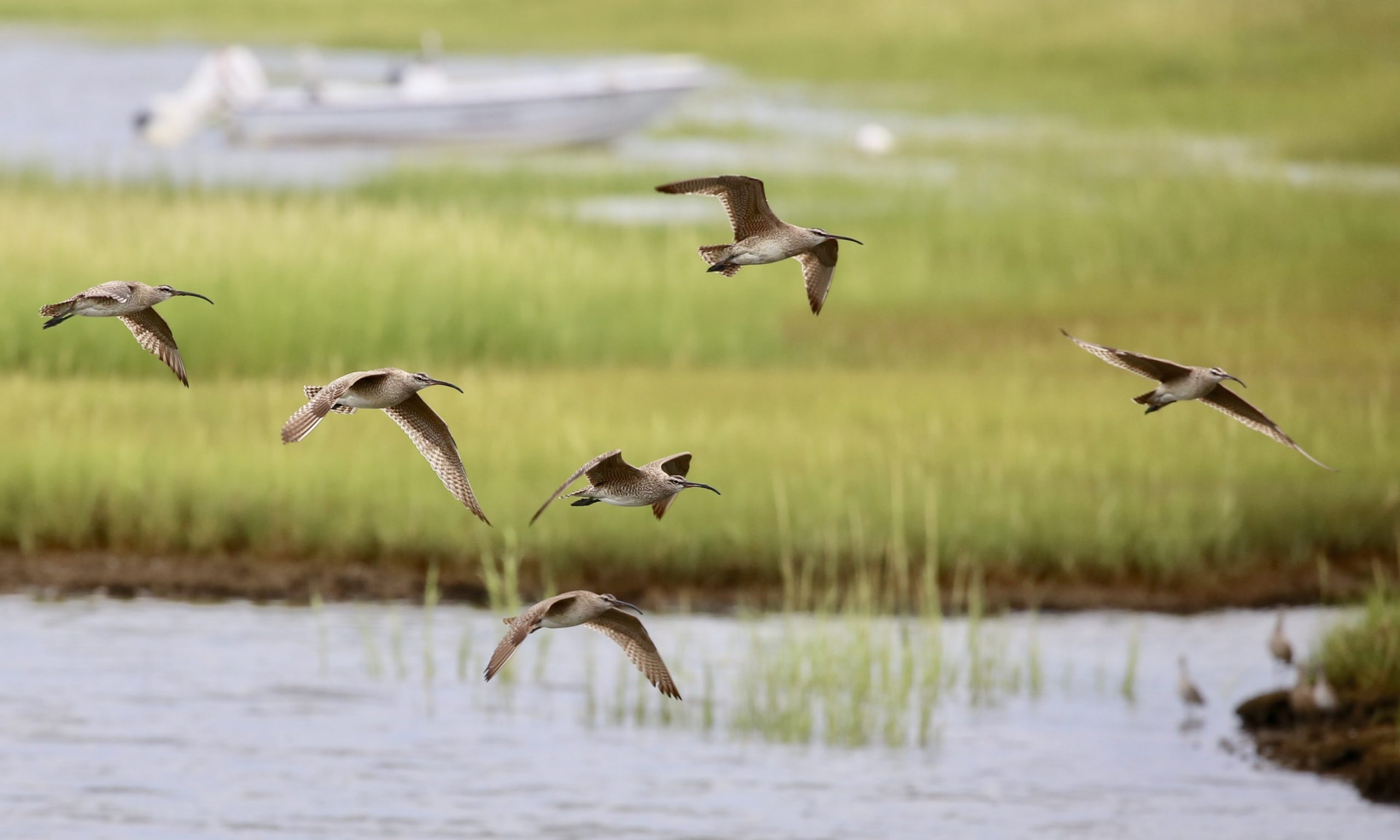
Though the sample was small, the study achieved its goal of establishing migratory connectivity between Cape Cod and the birds’ wintering grounds. It also offered rare insight into juvenile behavior, including the first tracking evidence of “oversummering”—when young birds delay migration for a year or more. One Whimbrel spent 18 months in the British Virgin Islands; another lingered in Venezuela for more than two years. These findings highlight the importance of the non-breeding season for Whimbrel survival and reinforce why protecting their southern habitats is essential for the species’ future.
The data also revealed distinct daily patterns on Cape Cod, where birds used different areas for feeding by day and roosting by night, a behavior not observed at their Caribbean or South American sites. These findings echo similar research in South Carolina and raise new questions about how early experiences shape future site fidelity.
Building on this foundation, Manomet’s team has already launched the next phase of research—an effort focused on collecting demographic data such as survival and recruitment rates to develop a population model that will help identify priority areas for conservation across the Western Hemisphere. This work is made possible through the support of the USGS Science Support Program and the National Fish and Wildlife Foundation.
Finding the Next Generation of Juvenile Backpackers
The release of the study coincides with the close of another productive season on Cape Cod, where scientists and partners are continuing the hands-on work of capturing and tagging Whimbrels, unfolding the next phase of research. Collaboration lies at the heart of Manomet’s approach, and this season’s field crew reflected that spirit, bringing together partners from Mass Audubon, the U.S. Geological Survey, the University of Massachusetts Amherst, and US Fish and Wildlife Service to scout key Whimbrel staging sites across the Cape.
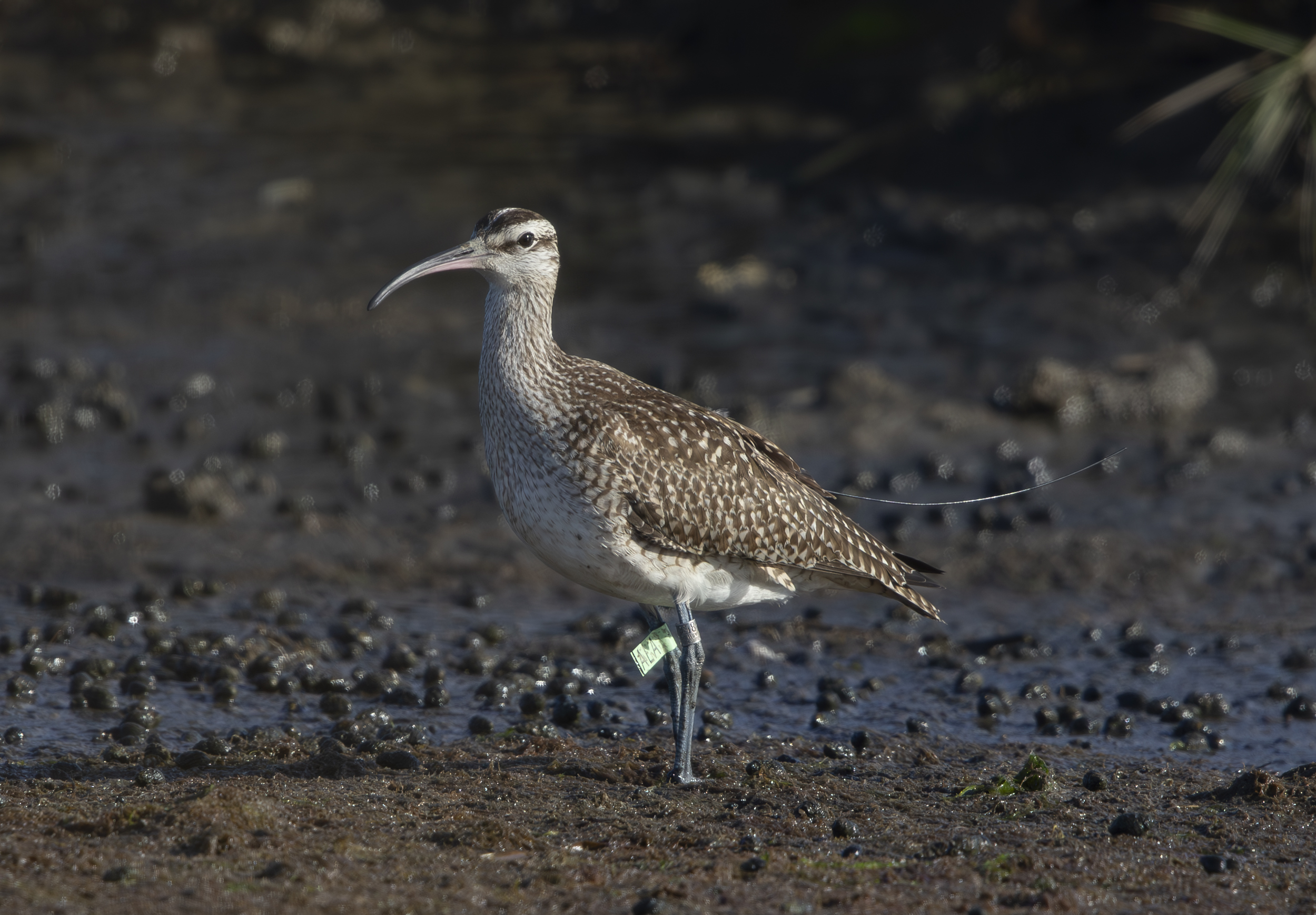
Studying Whimbrels requires flexibility, precision, and patience. The team followed the tides, navigated muddy salt marshes, and waited silently for the young birds to appear and land near carefully placed traps. Fine monofilament nooses attached to lines or mats were set in feeding areas; when a bird stepped on one, its foot could gently catch as the loop tightened. The traps were monitored constantly, and any captured bird was immediately extracted and released after processing.
Although the team’s goal was to capture and tag seven individuals, four were successfully caught—one adult and three juveniles—over the course of two weeks, with several near successes each day. At one site in West Dennis, patience paid off with the appearance of a single European Whimbrel (Numenius phaeopus phaeopus), a rare visitor and the second documented sighting of the species in Massachusetts.
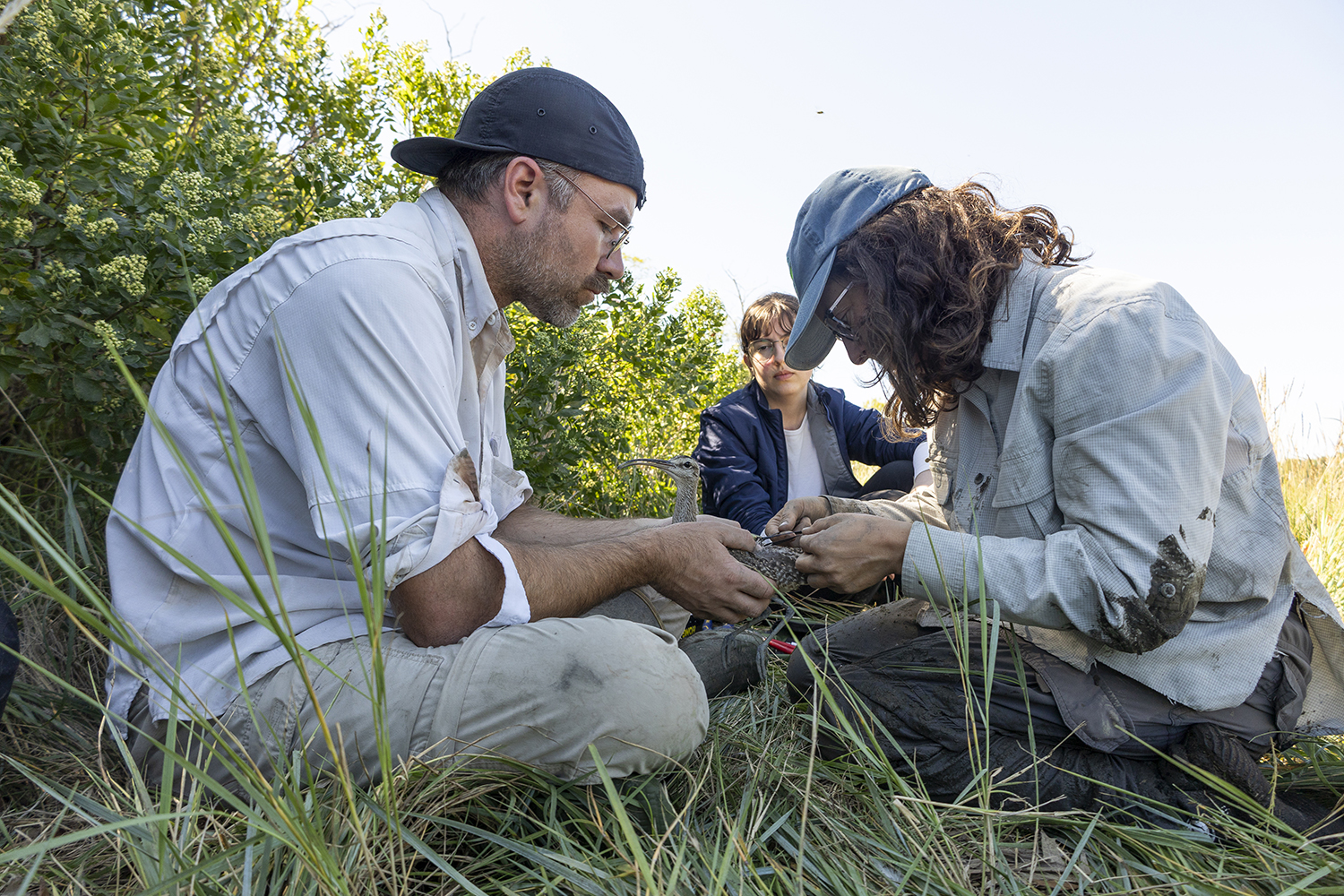
In the end, four Whimbrels were captured, and three transmitters were deployed. Towards the end of the field work, a young bird was spotted with a large clam attached to one of its toes. The team watched this bird closely, hoping to catch it and remove the clam before the season ended. Just as the time came to call it quits, a Red-tailed Hawk swept over the group of Whimbrels feeding in the trap zone. The startled flock took off in a flurry of wings and in the chaos, the young bird with the clam landed right in the noose line. It felt like a stroke of luck and the perfect way to end the season: a safe capture, a quick rescue, and one very relieved Whimbrel released back to the marsh. Although no transmitter was placed, we deployed a leg flag on it, and the moment served as a reminder that conservation is as much about compassion as it is about data. If you spot a Whimbrel with an FN3 flag, Manomet’s researchers would be thrilled to hear from you.
Navigating the First Big Storm
After replenishing their energy reserves and building flight muscles, these Whimbrels began their nonstop transoceanic flights to wintering grounds in the Caribbean or along the northern coast of South America. One juvenile (FN8) and an adult departed Cape Cod and soon encountered the powerful wind fields of Hurricanes Imelda and Humberto.
Tracking data revealed how both birds navigated the storm, each taking a different route. Their movements capture the immense challenges migratory birds face, especially those crossing open ocean. It’s a striking example of the instinct and resilience of shorebirds: a young bird, only a few months old, using the storm’s wind field to its advantage and flying at speeds exceeding 100 kilometers per hour along the western edge.
As of early October 2025, both Whimbrels have safely reached Venezuela, while a second juvenile remains active on the shores of Cape Cod.
Could the places young Whimbrels choose on their first migration determine where they return as adults? Continued tagging and long-term monitoring may help answer that question. With Cape Cod now established as a vital research hub, Manomet’s team is laying the foundation for ongoing studies that will track both adult and juvenile Whimbrels side by side. Each new data point brings scientists closer to understanding how these long-billed travelers learn, adapt, and survive across the hemisphere.
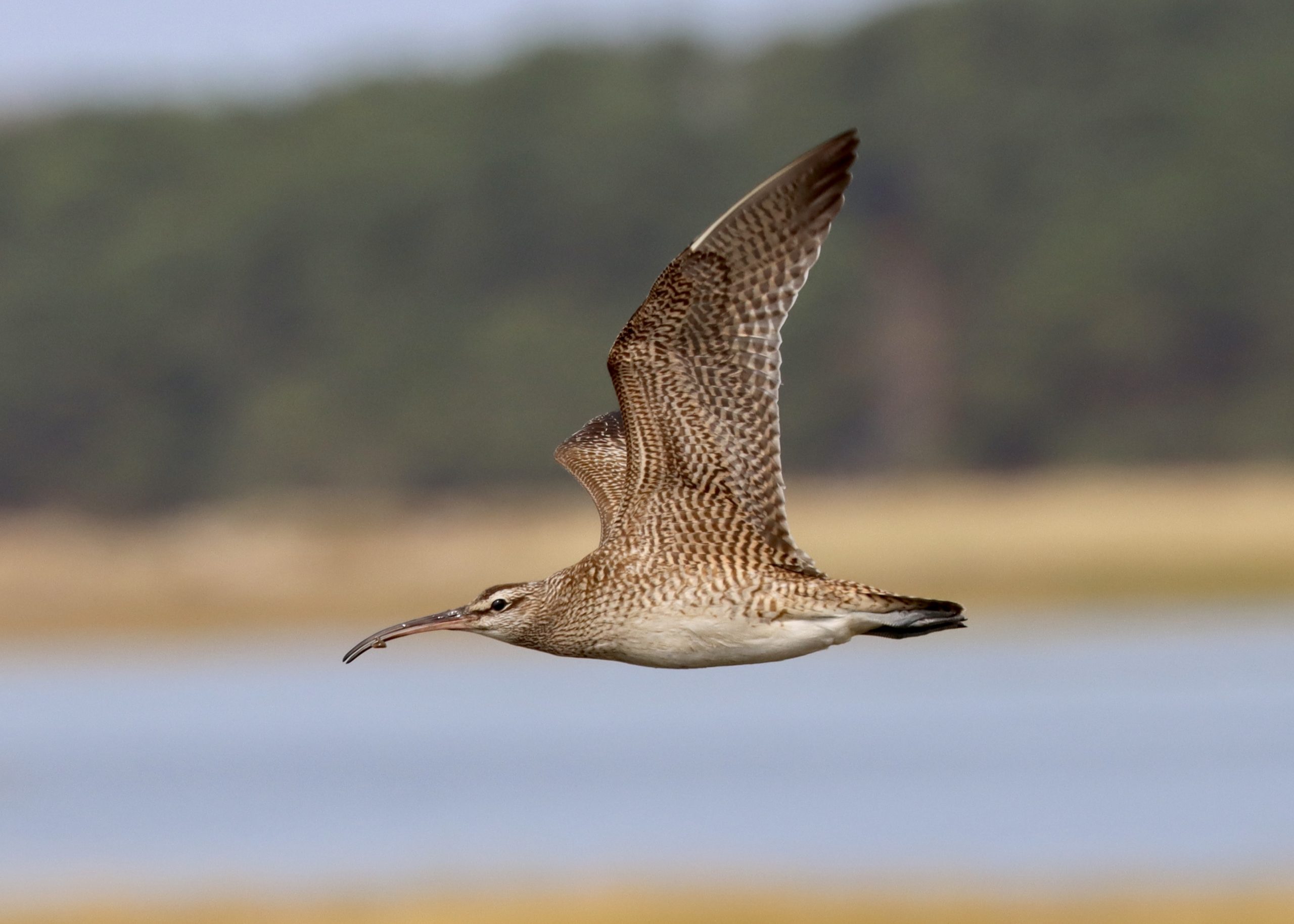


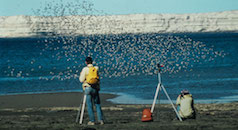
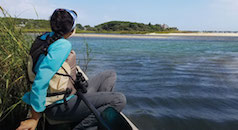
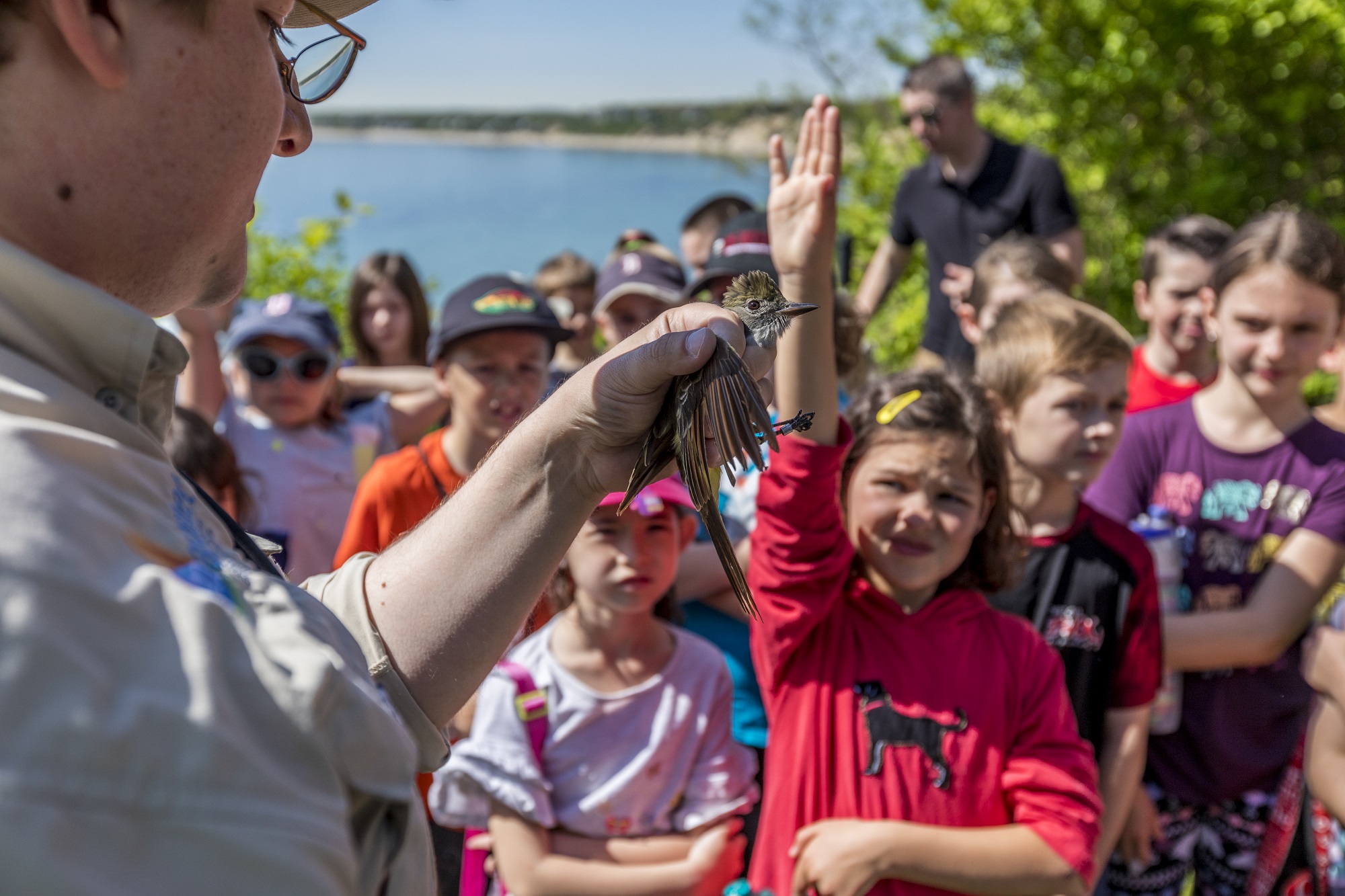
 Back to all
Back to all